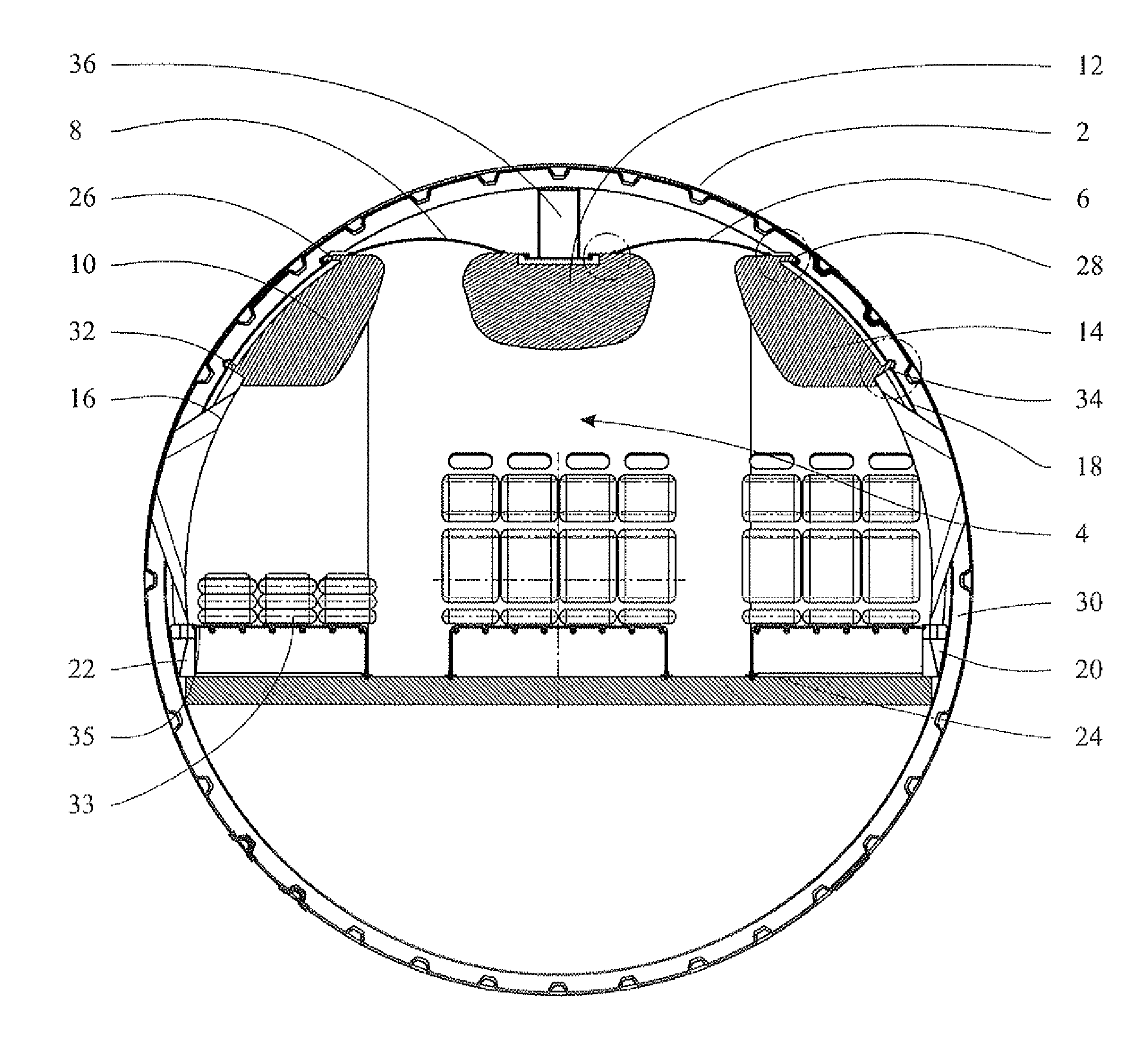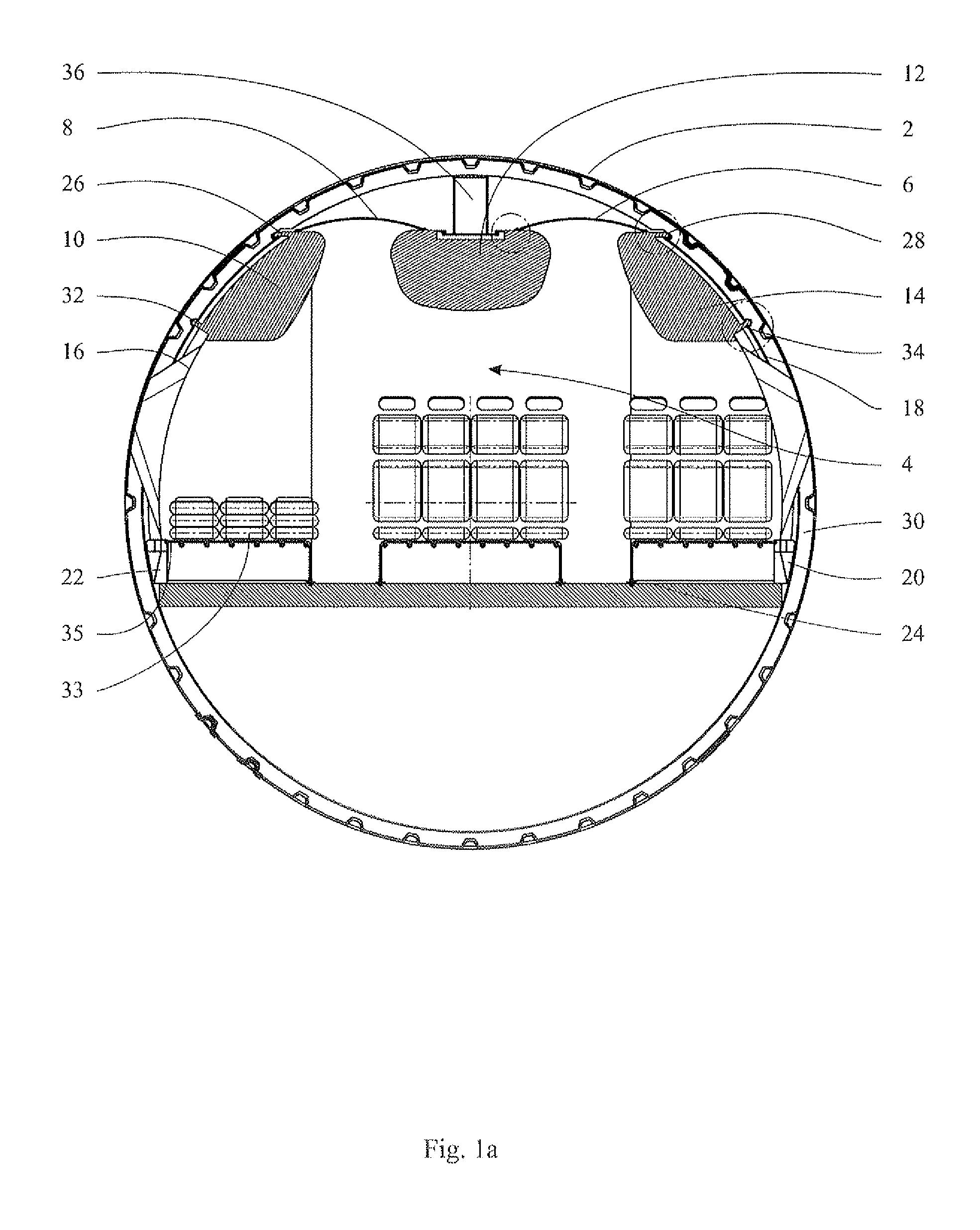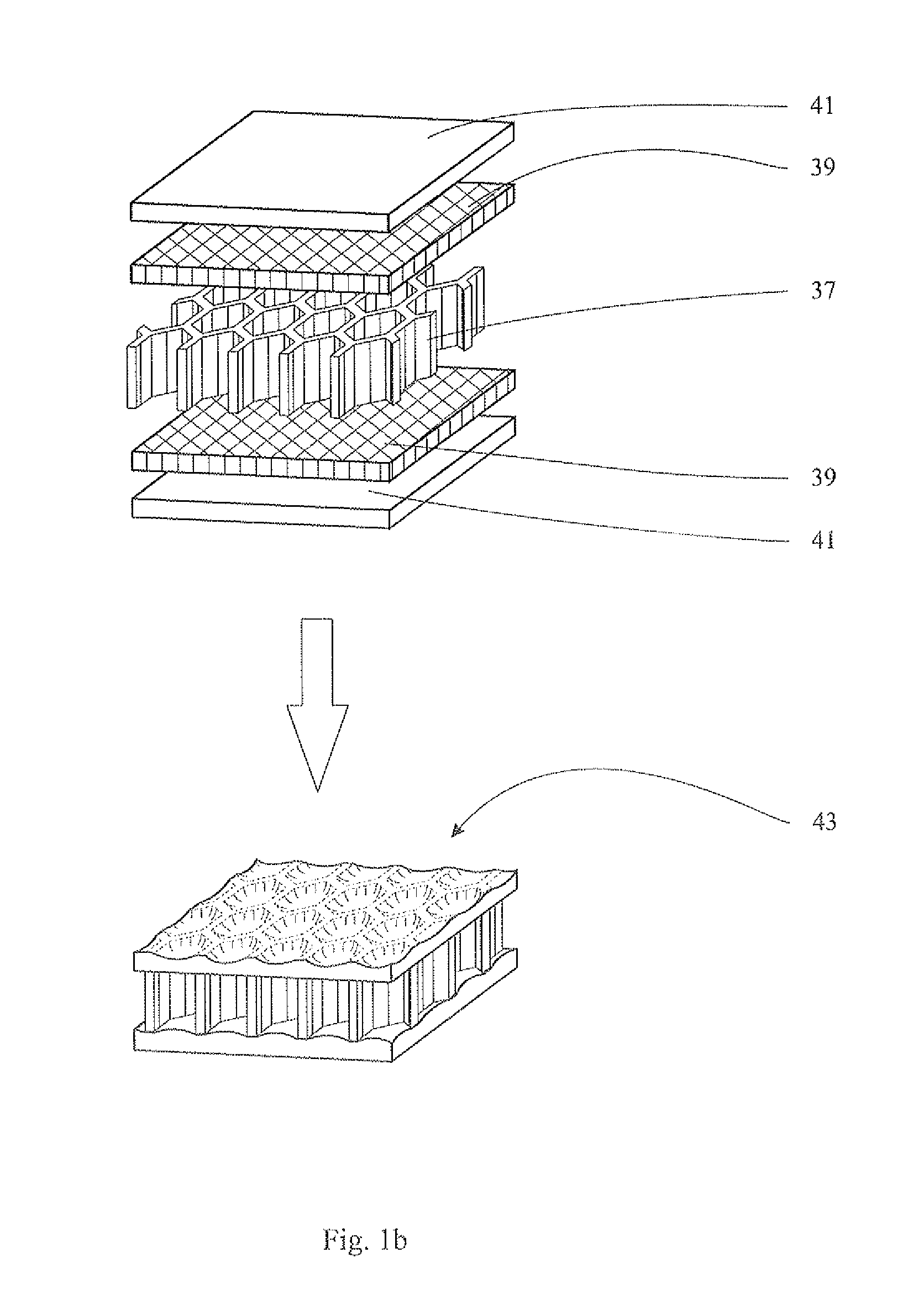Safety cabin
a cabin and safety technology, applied in the field of cabin systems, can solve the problems of difficult repair, injuring passengers in the cabin, and conventional cabin concepts do not provide any help in this context, so as to improve mechanical strength and quality, reduce components and installation costs, and facilitate installation more quickly
- Summary
- Abstract
- Description
- Claims
- Application Information
AI Technical Summary
Benefits of technology
Problems solved by technology
Method used
Image
Examples
Embodiment Construction
[0016]FIG. 1a shows a cross section of an aircraft fuselage 2 into which a cabin 4 is integrated. The cabin 4 comprises ceiling lining components 6 and 8, overhead bins (also known as hatracks) 10, 12 and 14, lateral lining components 16 and 18, supply ducts 20 and 22, as well as a cabin floor 24. These elements 4 to 24 together define at least one section of a passenger cabin in the form of a closed safety cell.
[0017]The above-mentioned components preferably comprise an impact-resistant material, for example glass-fibre reinforced plastic (GFP) or a similar laminate comprising aramid fibres. The strength of the material can be increased by providing additional intermediate layers comprising Kevlar. The material is, in particular, suitable to resist impacts of splinters or fragments of the fuselage material.
[0018]In this diagram the two lateral overhead bins 10 and 14 are each hooked into frame elements 30 by an upper end 26 and 28, and are each detachably locked into place in the f...
PUM
 Login to View More
Login to View More Abstract
Description
Claims
Application Information
 Login to View More
Login to View More - R&D
- Intellectual Property
- Life Sciences
- Materials
- Tech Scout
- Unparalleled Data Quality
- Higher Quality Content
- 60% Fewer Hallucinations
Browse by: Latest US Patents, China's latest patents, Technical Efficacy Thesaurus, Application Domain, Technology Topic, Popular Technical Reports.
© 2025 PatSnap. All rights reserved.Legal|Privacy policy|Modern Slavery Act Transparency Statement|Sitemap|About US| Contact US: help@patsnap.com



